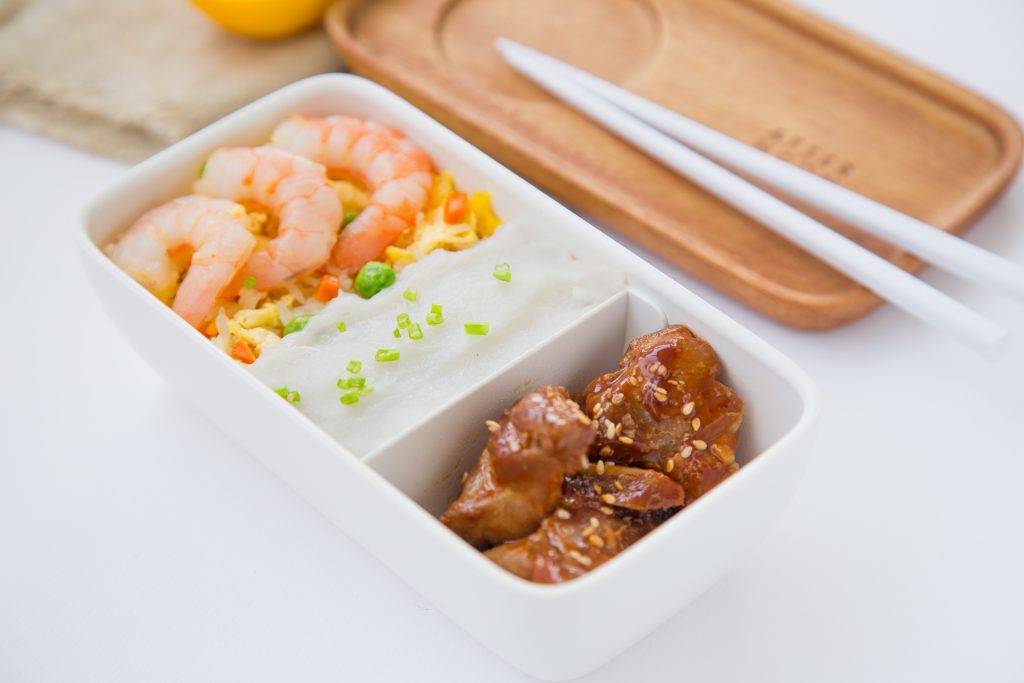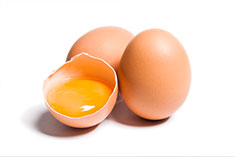The school canteen may be a young foodie’s heaven, but there are benefits to packing a lunch or bento box!
Traditionally, bentos (弁当) are a perfectly portioned and portable Japanese-style lunch. It usually consists of a main carbohydrate such as rice and some sides¹ — with even the occasional dessert or fruit sliced as animals, flowers and more exciting shapes!
If you’ve never made bentos, the idea might seem challenging. All you need to do is keep in mind these 5 tips for packing a nutritious bento box for school and you’ll be a pro in no time!
1. Choose your box
Size, function and material are important factors to consider when choosing a bento box for your child. The size of the bento box is equivalent to its volume and is a good indicator of the daily necessary energy amount its user needs. You may refer to this quick rough guide, although do note that it’s based on Japanese children who do have an average body size² similar to their Singaporean counterparts:
| User age | Suitable size and volume |
| 3 to 5 years | 400ml |
| 6 to 8 years | 500ml |
| 9 to 11 years | 600ml |
| 12 to 17 | Male: 900ml Female: 700ml |
Plastic and stainless steel are good options as they are both easy to clean. Most plastic options have a lid furnished with packing so it’s spill-proof if your child has butter fingers!
Tip: If you’re looking to keep food warm for longer, you could pack a plastic bento box into a well-insulated bag. Alternatively, hot foods can be packed into a stainless steel option with thermal properties:

Thermal Stainless Steel
Bento Lunchbox (Pink)
KJB
(Also available in other colours)

2. Compartments are key
This is where the function of the bento box comes into play. If you’ll be packing more than one dish with a sauce or gravy frequently, compartmentalise your food to keep the dry (e.g. rice) and wet (e.g. sweet and sour pork, dahl) apart. No child wants their lunch to become soggy when lunch rolls around, pun intended!
You may purchase a bento box that already comes with compartments. Otherwise, silicone muffin cups can also be used to keep loose items like blueberries in one place and are reusable.

3. Cook all the food thoroughly
The rule of thumb is to always choose food that can be eaten cold. If you must include fresh foods such as meat, it must be cooked thoroughly so that they can withstand sitting in a box at room temperature for a few hours. This is especially important in hot and humid Singapore, where food tends to go bad faster.
Tip: Cube chicken breast for karaage (“deep-fry” in Japanese), or toss some sliced Angus beef ribeye steak into a stir-fry! These cooking methods will prolong the shelf life of such foods and make them more packable too.
Save more on the freshest flavours for every bento box, everyday! Discover more of the freshest savings here.
4. Figure out the ratio of food
In Japanese culture, the traditional ratio used to ensure a nutritionally balanced bento is 4:2:1. This means 4 parts of rice to 2 parts of side dishes and 1 part of other ingredients³. The national recommendation, however, is 1:1:2 — 1 wholegrain, 1 protein and 2 fruits or vegetables⁴.
Active teenagers will require carbohydrates to expand more energy, so you may adjust the amount of carbohydrates to meet the user’s energy requirements accordingly! You may adjust the amount of carbohydrates according to the user’s energy requirements accordingly!
5. Make it colourful and fun!
To put it simply, the rainbow involves eating foods of different colours that your child likes every day. Younger children are visionary creatures, so make it a point to include colourful and nutritious vegetables or fruits in their bento boxes! Make it a fun activity to bond with your child over by getting them involved at every step of the bento-making process.
Allow them to plan the weekly menu and choose what foods they want to include in their bento box to make it as colourful as they’d like…
…but that doesn’t include filling it up with M&M’s. That’ll be a delicious, but not exactly nutritious bento box!
Continue to enjoy incredible new deals on fresh and delicious produce every week here — that’s the perfect time in between to plan your child’s bento boxes in advance! With these tips and some planning, you’ll be a (bento) packing pro in no time!
***
References:
¹ Japan Info 2015-2019, The meaning of bento: types of bento and why do people make bento boxes in Japan, viewed 26 July 2021
² Tomo 2017, How to choose your bento box, Unique Japanese Products and Culture, viewed 26 July 2021
³ Makiko, I 2007-2021, Bento basics, Just Bento, viewed 27 July 2021
⁴ HealthHub 2021, My healthy plate, Health Promotion Board, Ministry of Health Singapore, viewed 13 August 2021




